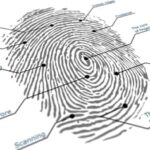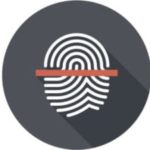
SecuGen is a prominent, longstanding player in the biometrics industry, having been active in the space since the late ’90s. The company is renowned for its fingerprint scanning technology, with major partners like M2SYS and Citrix having embraced its solutions, while SecuGen has also seen its fingerprint sensors integrated into keyboards and biometric tablet devices.
SecuGen’s activity in the industry has continued despite the disruption of the COVID-19 pandemic, with the company having recently announced a fingerprint sensor integration into a biometric reader from Simprints, and the latest addition to its renowned Hamster line of fingerprint scanners.
Naturally, SecuGen VP Jeff Brown discussed these developments in a new interview with FindBiometrics President Peter O’Neill. But their conversation also covered much more, including the difference between optical and capacitive sensors, challenges facing the biometrics industry, and the risks of COVID-19 transmission through shared surfaces like fingerprint readers – a particularly timely topic.
Read the full FindBiometrics interview with Jeff Brown, Vice President of Sales, SecuGen:
Peter O’Neill, President & CEO, FindBiometrics: SecuGen is one of a very few companies that have been in the biometric space longer than FindBiometrics. You started in 1998 and continue to be a world leader in optical fingerprint recognition technology. Can we start our discussion today with just reviewing the major differences between optical and capacitive sensors, please?
Jeff Brown, VP of Sales, SecuGen: Silicon sensors are chips, capacitive chips, and, as the name implies, they capture images by measuring capacitance at an array of points. They do not actually take a picture but instead infer the image from the array of points. They have sensitivity issues and must be used in a delicate manner, for one thing. In other words, they’re sensitive to environmental changes, temperature and humidity, as well as scratching. If you drop a liquid on them, you may damage the sensor. Silicon sensors are often coated to help prevent these issues, but optical sensors just don’t have these problems.
Our sensors have glass platens, which are made of glass with about the hardness of window glass. They are hard to scratch, and you can clean them with alcohol or a glass cleaner – anything you can clean glass with. I think a case can be made that you can generate a better image using an optical sensor. Another thing to think about is: because of the cost of manufacturing, capacitive sensors tend to only be on the small size. We’re working on a FAP30 optical sensor, and I don’t think you’ll find a FAP30 capacitive sensor. There are other technologies other than optical out there, but not capacitive, in that larger size range.
Peter O’Neill: What would you say are some of the other reasons that original equipment manufacturers, software vendors, system integrators, and value added resellers choose SecuGen?
Jeff Brown: Well, for one thing, we’re 100 percent focused on working with developers and integrators of various kinds. That’s our focus and the entirety of our business. Whereas, I’d say most of our competitors also sell to end users, and many of them also compete against their customers by manufacturing end products like access control devices.
Our goal is to develop products and tools for development organizations to integrate into their own products and systems. We’ve learned over the years how to support those organizations. In the process, because of our focus, we’ve developed a wide variety of tools and a very broad platform for developers.
Peter O’Neill: To that end, you recently announced that Simprints launched an enhanced scanner for the global healthcare market? Can you please tell us a little bit about that news?
Jeff Brown: Simprints partnered with SecuGen to develop a small handheld wireless fingerprint scanner designed to streamline the delivery of vaccines and other humanitarian aid worldwide, especially in rural areas that have traditionally limited resources and accessibility. We spent a good number of man-hours communicating closely with Simprints and customizing our technology to meet their goal of creating a low-cost scanner that uses NFC and Bluetooth pairing and works successfully in outdoor and often rugged environments. This is one of the reasons OEMs and integrators like to work with us. I think, that sets us far apart from other technology providers. Simprints is now working to build and deploy 1,400 units for immediate use in healthcare projects across sub-Saharan Africa.
Peter O’Neill: You’ve also very recently announced the next generation Hamster Scanner, Hamster Pro 30. And, I think it’s already attained the very stringent FBI image quality specs. Please fill us in.
Jeff Brown: Yes. We’re continually expanding our product offerings, and this new one adds to the Hamster Pro line. We have the Hamster Pro, Hamster Pro 10, Hamster Pro 20, and soon we’ll have the Hamster Pro 30. The FBI Mobile ID FAP 30 specification requires a bigger platen than FAP 10 or FAP 20. Therefore, the device is a bit bigger than the Hamster Pro 20, although not greatly so. The Hamster Pro 30 is built on the same type of technology with hardened glass platen and advanced optical imaging technology.
We’ve already received the FAP30 certification, which is an image quality certification that the FBI performs. And we’re putting some finishing touches on the product itself – documentation and various other things. And hopefully we’ll be providing samples before the end of the year, and then releasing the product to the general public.
Peter O’Neill: Can you also give us an update on another new product: the Unity 20 Bluetooth product that was announced last year? How is that coming along?
Jeff Brown: The Unity 20 Bluetooth reader has two versions that allow it to work with Android, iOS, and Windows. We’re placing this in many, many development organizations. There’re quite a few projects around the world now with our Bluetooth reader. We’re very excited about this product launch. It’s been very successful.
Peter O’Neill: It’s interesting Jeff, you and I have had many conversations about the biometric space in the years that I have known you, I think it’s going on 16, 17 years. The industry is moving very quickly now. Do you sense any challenges that we have as an industry moving forward? I know the pandemic has been a challenge for everybody. But beyond the COVID situation, are there areas that you think that the industry needs to apply more focus?
Jeff Brown: Well, that’s a difficult question. In any industry, including biometrics industry, there’s always constant change, constant churn, constant froth, and anybody who can’t keep up is left by the wayside. But that’s just normal business. I think the pandemic, however, has really thrown a wrench into not only our business, but ask the airline people what it’s done and the restaurant industry. We seem to have recovered well. There was a severe and sharp reaction early in the pandemic, around April or May. But since then, it seems to me, the industry has been recovering. Still, I think the fear of touching surfaces will remain. There’s always been one, but of course the pandemic made it orders of magnitude greater.
Inevitably there will come a time when there’s a vaccine and we’re all vaccinated. Bad feelings tend to fade quickly and within a year or two of that time, when the vaccine’s available, I think people will forget about their fears of touching these surfaces. It will be closer to the way it was before the pandemic. Although I doubt if it will go back there exactly, everything will change a little bit. For example, we have all been ordering online more, and many companies have figured out how to have their employees work from home. This will cause a permanent shift in our collective behavior.
Peter O’Neill: I think some of the trends that we’ve seen in the industry globally – like remote work, and telehealth – have really started to increase. Which means you need more identity proofing. You need to make sure that you’re able to prove who you are to a bank or to a healthcare provider or to anybody. So, I think this will increase the need for the types of services that the biometric industry provides.
Jeff Brown: Well, I think that’s right. The real question is: will they be using sensors like fingerprint sensors that you have to touch? That’s the real question. We did see an uptick in orders for fingerprint readers from organizations that we understood were supplying to their employees to authenticate while working from home. So, this makes sense for individual use in home and office settings. But there are alternate methods of authentication where you now have to take into consideration health implications. It’s not clear how this will all turn out for the industry globally.
I’ve been telling our team that we have to adapt as quickly as possible for the same reason I just was saying. Once there’s a vaccine and it’s being disseminated around the world, the desire of people to have touchless sensors, while it won’t entirely disappear, will greatly diminish. It just will. People forget pretty easily, especially negative feelings. That is a human trait that we all share. And so, I think that’s why we’re doing the best we can to accelerate a project to create a touchless sensor. I don’t think it’s a limitless market.
One of the few things I do is go to the grocery store and I used to wear gloves. I don’t anymore. Nobody wears gloves and they’re all touching everything in that store. Touching, putting it back, examining it. That’s just the way it is.
Peter O’Neill: I think what they’re discovering is that really, it’s not so much leaving the residue of COVID around on surfaces. It’s really the droplets, the breathing. It’s why masks are so important.
Jeff Brown: Yes, that’s true. The studies that they’ve done do not show touching surfaces to be a substantial means of transmission. It’s in the air, it’s droplets in the air, as you say.
Peter O’Neill: Thank you very much for taking the time to speak with us today.
Jeff Brown: Always a pleasure to speak with you, Peter.







Follow Us